Memorial Day: Remembering America’s fallen heroes
National security correspondent Jennifer Griffin honors the fallen service members at Dover Air Force Base.
Every day is Memorial Day at McSorley’s Old Ale House in Manhattan.
It has been for more than 100 years, courtesy of a haunting, dusty reminder of the last stateside meal enjoyed by young American men before they were killed in Europe in World War I.
The venerable New York City saloon has been slinging suds on East 7th Street in the East Village since 1854. It’s one of the oldest bars in the Big Apple.
It's also now a tourist attraction beloved for its sawdust-covered floor, antiquated 19th-century ambiance and stubbornly limited drink options. Only light beer and dark beer are available — and on draft only.
MEET THE AMERICAN WHO INVENTED LIGHT BEER
Amid the bonhomie of a nostalgic neighborhood beer joint, McSorley’s quietly displays a haunting tribute to American doughboys whose wish for safe return from the battlefields of World War I was never granted.
"The Great War" exploded in Europe in 1914. The United States joined in 1917 and quickly hastened the defeat of Germany and its Central Power allies in 1918.

WWI soldiers enjoyed a turkey dinner at McSorley's Old Ale House in Manhattan before departing for Europe, leaving their wishbones above the bar. Nearly two dozen remain today, a reminder of those who never returned. (Kerry J. Byrne/Fox News Digital)
"As people were being drafted, McSorley’s would treat the guys who were regular customers to a turkey dinner" before they departed for Europe, longtime barkeep Steven "Pepe" Zwaryczuk explained to Fox News Digital this week.
"After the dinner, they would take the wishbone and hang it on this fixture," he said, pointing to a pair of light bulbs above the NYC bar.
The bulbs are joined by a connecting pipe, about 2 feet long, that makes a perfect hook upon which to hang a turkey wishbone.
MEET THE AMERICAN WHO HONORS THE MEMORY OF 200,000 FALLEN WAR HEROES
Victorious soldiers and sailors found their way back to the neighborhood after the armistice ending the war was signed on Nov. 11, 1918.
These service members would, according to pub legend, remove a wishbone as a token of their safe return — and break it with the bartender.
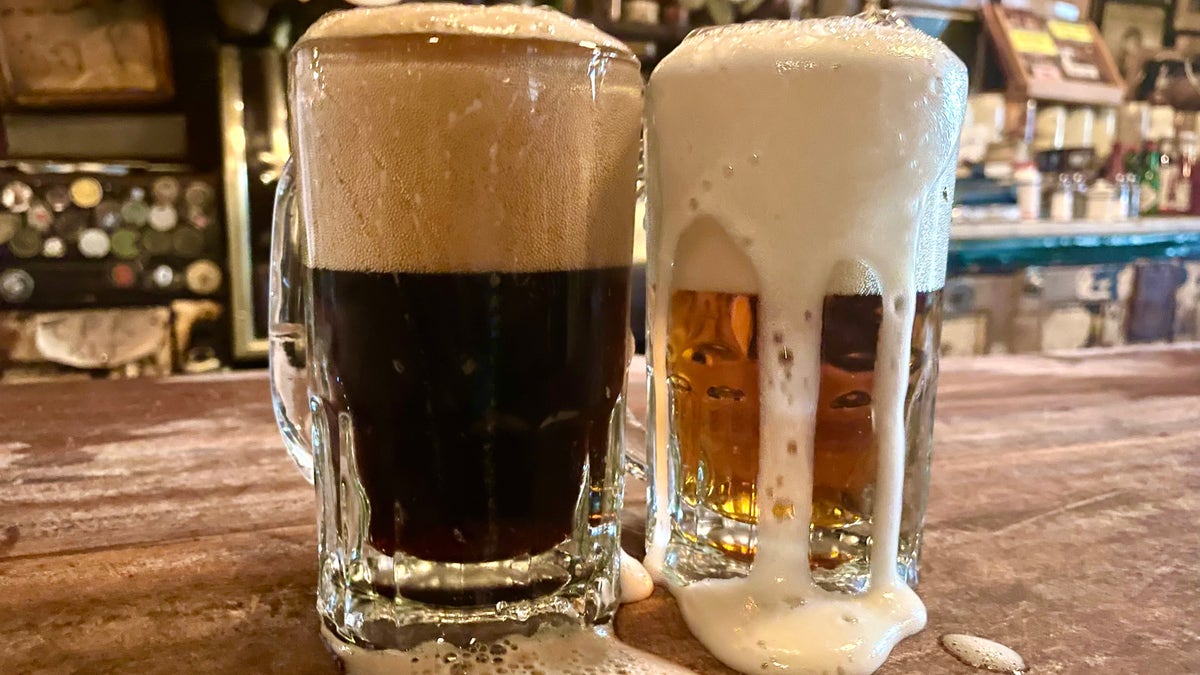
McSorley's, which has been slinging sides in Manhattan's East Village since 1854, famously offers only two kinds of beer: dark and light. (Kerry J. Byrne/Fox News Digital)
Not every McSorley’s soldier who left for Europe returned.
So not every wishbone was claimed in celebration.
Nearly two dozen wishbones — Fox News Digital counted 22 — still hang on the light fixture above the bar, left by local men who allegedly feasted on turkey at the old ale house before they shipped overseas.
"These bones commemorate the fellows … who never came home. Memorial Day, hence."
They were presumably killed or went missing in battlefields such as Belleau Wood, Soissons or Saint-Mihiel.
"These bones commemorate the fellows who lived in the neighborhood, who were customers of McSorley’s, who never came home."
He added, "Memorial Day, hence."
MEMORIAL DAY 2022: FIVE FACTS YOU NEED TO KNOW ABOUT THIS AMERICAN HOLIDAY
"You gotta see the people who come in here who are really touched by this," he added.
While customers are touched, the dust-covered wishbones themselves are not, out of respect for the war heroes who left them there. Zwaryczuk explained that the wishbones were "recently" cleaned, in 2011 — and only upon orders by city health inspectors.
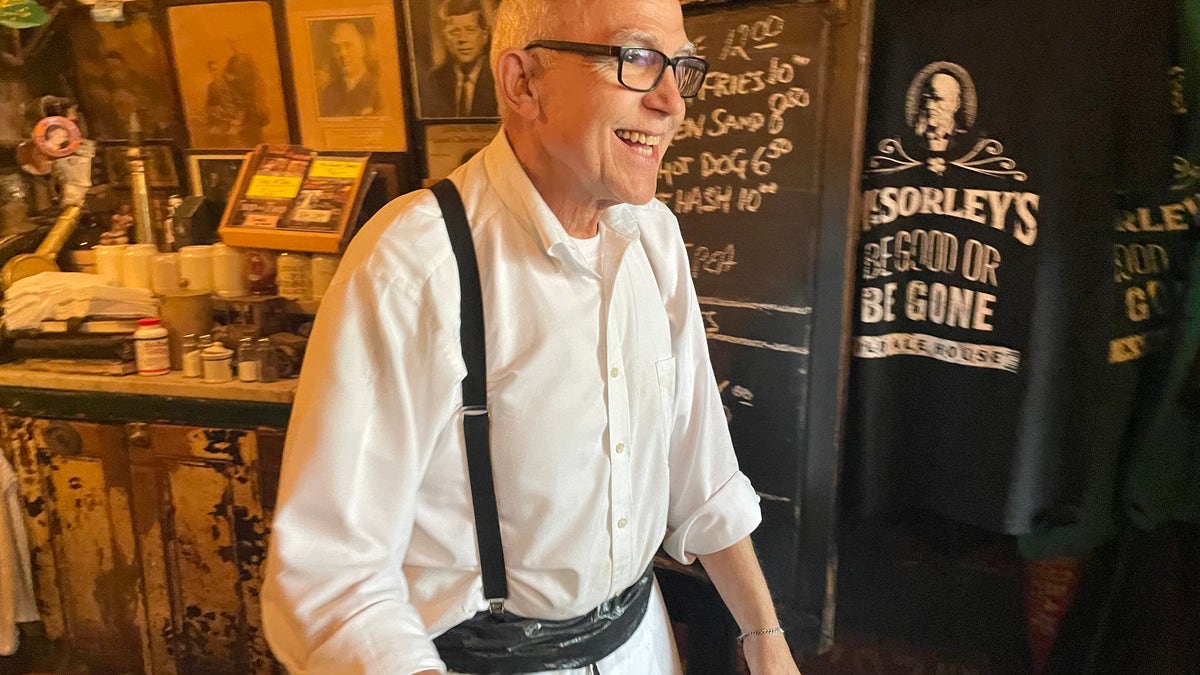
Longtime barkeep Steven "Pepe" Zwaryczuk says McSorley's visitors are "really touched" upon learning the story of the soldiers who lost their lives in WWI — and who are remembered by wishbones hanging over the bar. (Kerry J. Byrne/Fox News Digital)
Late owner Matthew Maher reluctantly did the dishonor himself, said daughter Teresa (Maher) de la Haba, who runs the tavern with family members today and still pulls shifts pouring light and dark behind the bar.
"Nobody wanted to touch them. It was like erasing our history," she said sadly.
The removal of the haunting World War I memorial, however temporary, ignited controversy within the New York City bar scene.
The names of the men who enjoyed their last stateside meal at McSorley’s and hung the bones above the bar were not recorded.
"It was ridiculous when the health department made Matthew Maher clean the wishbones," celebrity bartender and cocktail author Dale DeGroff told The New York Post in 2011. "They literally had stalactites of dust hanging on them."
The bones have gathered a decade-plus layer of new dust since then, regaining a semblance of their somber time-stands-still gravitas.
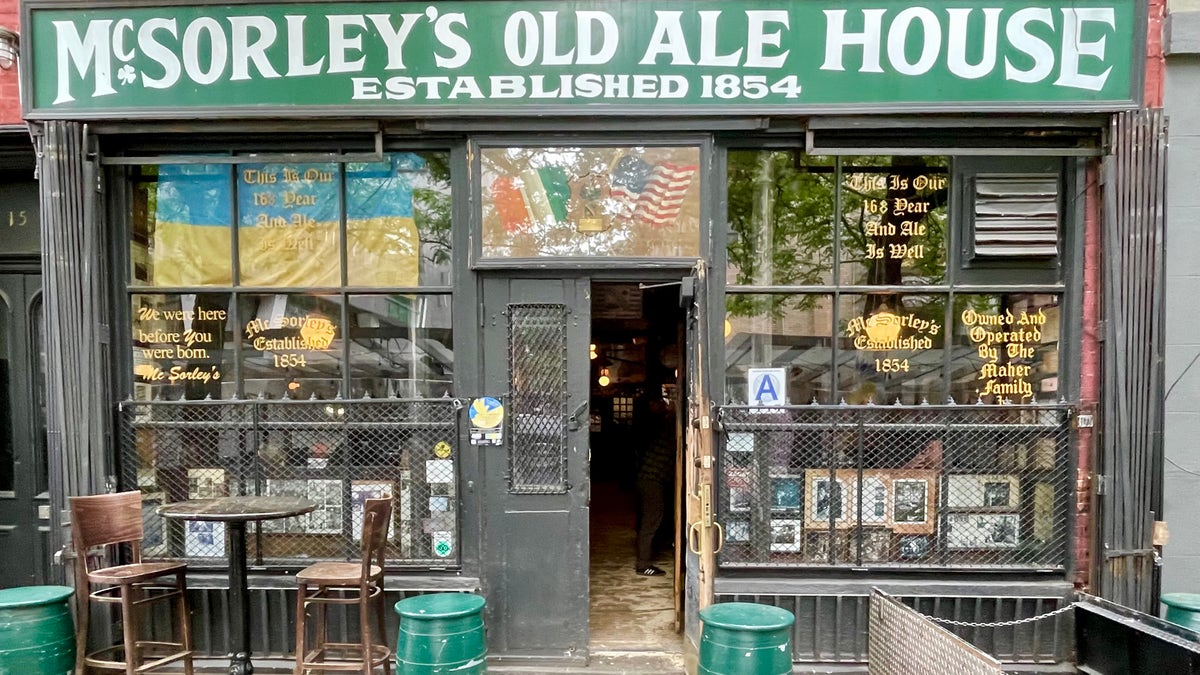
McSorley's on East 7th Street in lower Manhattan, founded in 1854, maintains its 19th-century ambiance amid steel-and-glass skyscrapers. (Fox News Digital)
The names of the men who enjoyed their last stateside meal at McSorley’s and hung the bones above the bar were not recorded, said de la Haba.
But an estimated 200,000 men and women from New York City shipped off for France in 1917 and 1918. Hundreds of thousands more Americans departed for France through New York Harbor.
Many would never see the U.S. again after sailing past the Statue of Liberty. About 117,000 Americans were killed in a few short months of horrific fighting in World War I.
"Anything that gets people talking about Memorial Day is a good thing."
Tedford H. Cann was one of McSorley’s most notable war-hero neighbors. The New York City schoolboy star became an acclaimed multi-sport athlete at New York University (NYU) and went on to serve as a Naval Reserve officer during the war.
He earned the Medal of Honor in World War I for finding and fixing an underwater leak aboard the USS May while it was sailing across the Atlantic, "at the peril of his life," according to his Medal of Honor citation — "unquestionably saving the ship."
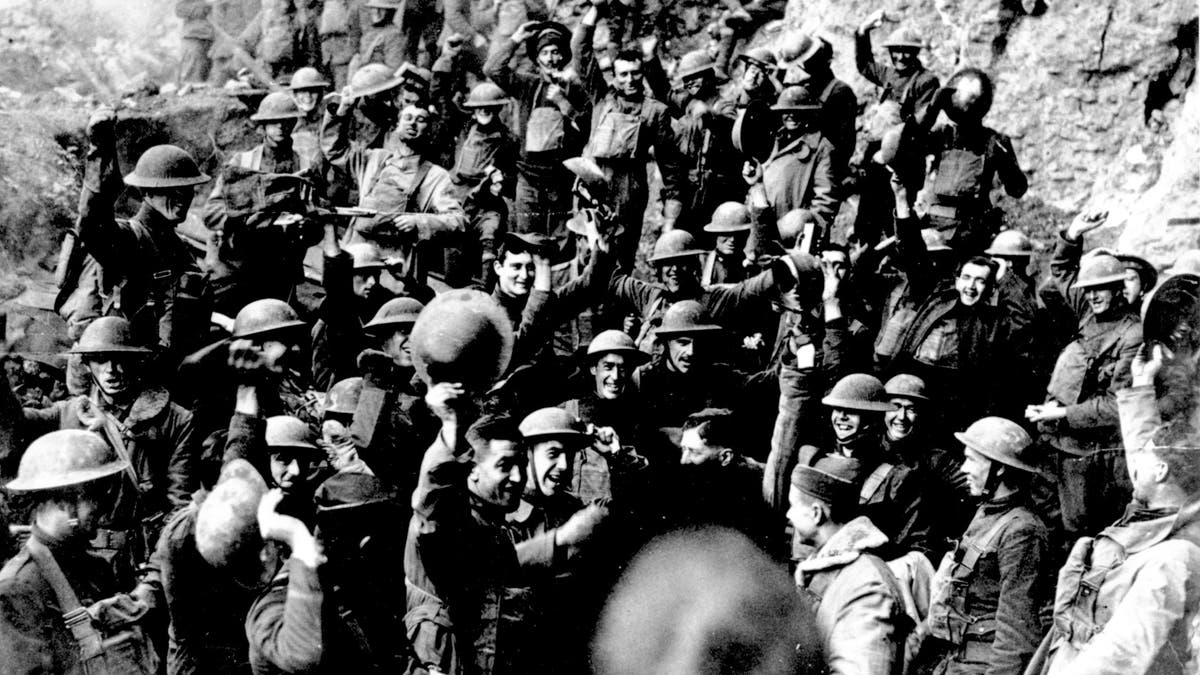
American troops cheer after hearing the news that the Armistice had been signed, ending World War I in Nov. 1918. They were located on the front northeast of St. Mihiel, France. Similar celebrations took place all along the line where Americans were engaged in an offensive. (AP)
Cann was one of McSorley's lucky neighbors. He survived the war and went on to a distinguished career as a record-setting swimmer, water polo pioneer, Olympic athlete and member of the international Swimming Hall of Fame.
Still, there is no record of his name, or that of any other local resident, who may have hung a wishbone above the McSorley’s bar before shipping off to war.
MEMORIAL DAY BY THE NUMBERS: FACTS ABOUT THE SOMBER AMERICAN HOLIDAY
Some people dispute the entire tale. "Many New Yorkers believe the McSorley’s story is a bunch of malarkey," Kevin Fitzpatrick, author of "World War I New York: A Guide to the City’s Enduring Ties to the Great War," told Fox News Digital.
But, he adds, "anything that gets people talking about Memorial Day is a good thing."
What’s not in dispute, Fitzpatrick said, is that the Big Apple paid a big price for victory in Europe — about 7,000 New York City residents were killed in World War I. And that Gotham residents rushed to honor their war heroes immediately after the war.
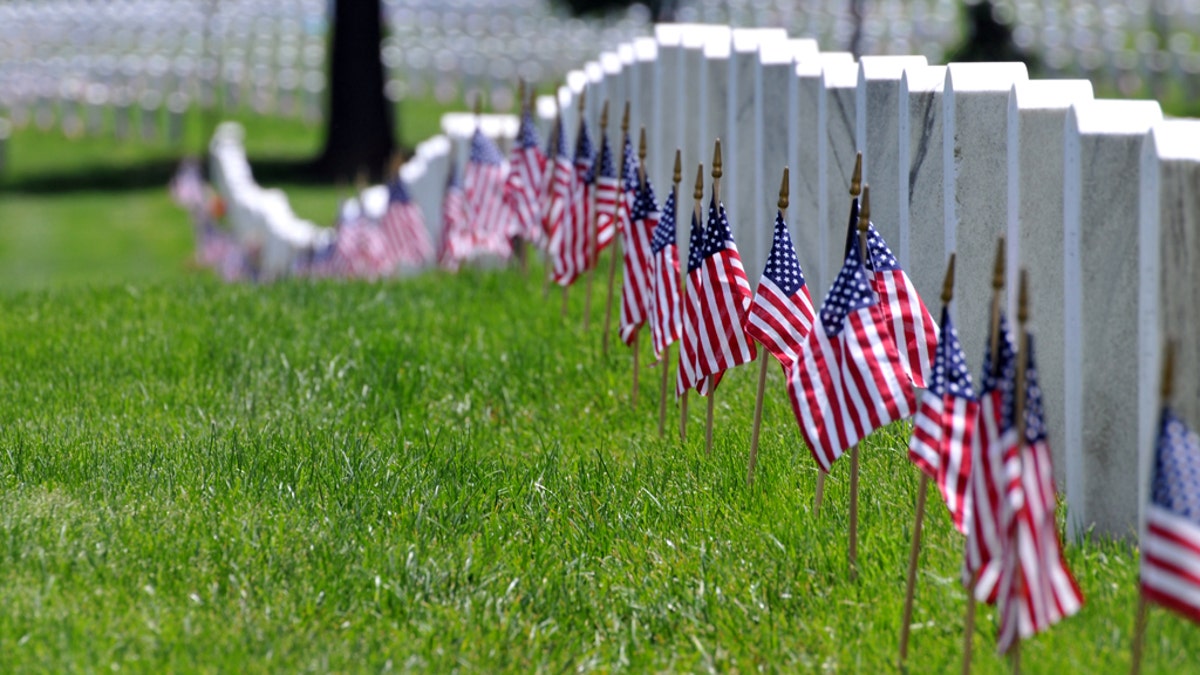
Memorial Day flags stand before a row of pristine white-marble gravestones.
Local citizens quickly raised money to erect more than 150 monuments and memorials to both its World War I veterans and to those who never returned, including 15 familiar doughboy statues, more than any other American city, according to the author.
"We thought World War I would be the ‘war to end all wars,'" said Fitzpatrick. "Americans went all out in their support, in their patriotism and in honoring those men and women immediately when they came home."
COMBAT VETERAN AND HIS WIFE HELPS OTHERS FIGHT PTSD — AND FIND HEALING AND HOPE
Almost all of these monuments, Fitzpatrick noted, were unveiled in the years immediately after the war, and all of them were privately funded.
"Americans went all out in their support, in their patriotism and in honoring those men and women immediately when they came home."
At least one of the New York City World War I memorials is seen by millions of people each year lording over the Crossroads of the World.
The image of Father Francis Patrick Duffy stands proudly in Duffy Square, as the northern triangle in the Times Square bow tie is known.
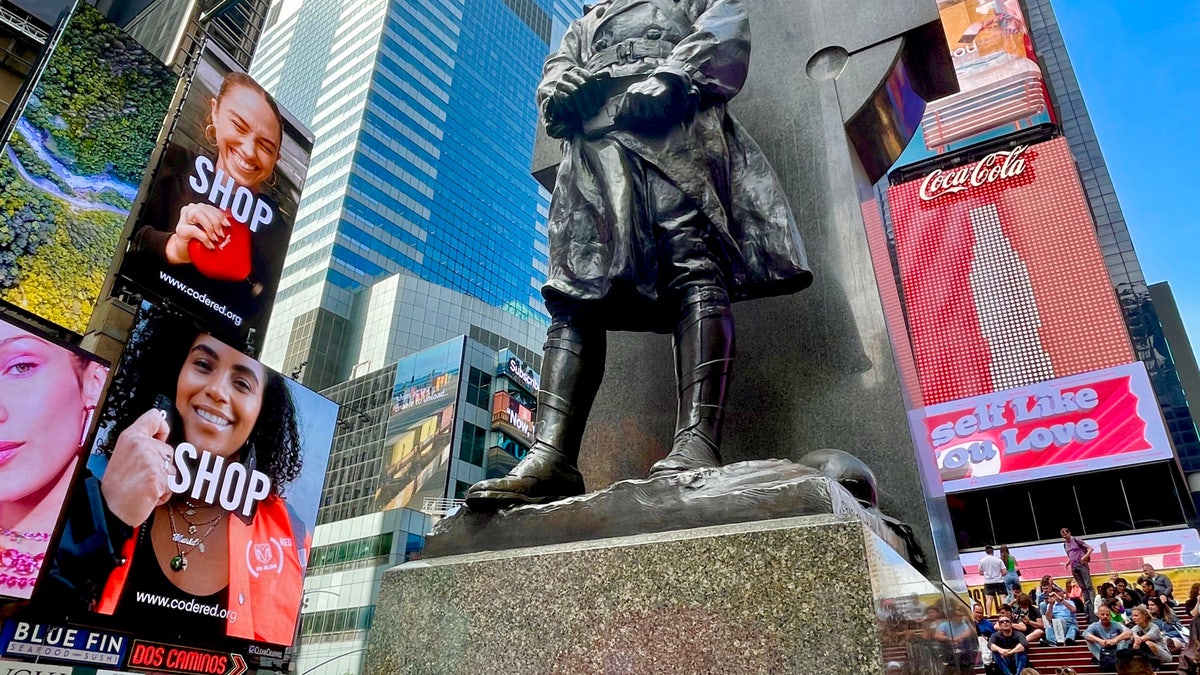
Fr. Francis P. Duffy rose to fame for his heroism in World War I and later served as pastor in Midtown Manhattan. His statue in the heart of Times Square is perhaps the nation's most visible World War I memorial. (Kerry J. Byrne/Fox News Digital)
It’s dedicated to the WWI U.S. Army chaplain noted for his fearlessness in combat as he cared for the wounded and dying.
Fr. Duffy's heroics earned citations for bravery from both the U.S. and French governments. He later became a spiritual leader in Times Square, as pastor at nearby Holy Cross Church. His battlefield exploits were portrayed by actor Pat O'Brien in the 1940 Hollywood production, "The Fighting 69th."
Elsewhere in New York City, Prospect Park in Brooklyn houses one of America's most haunting World War I memorials, a soldier in the embrace of a heavenly figure, called the Angel of Death.
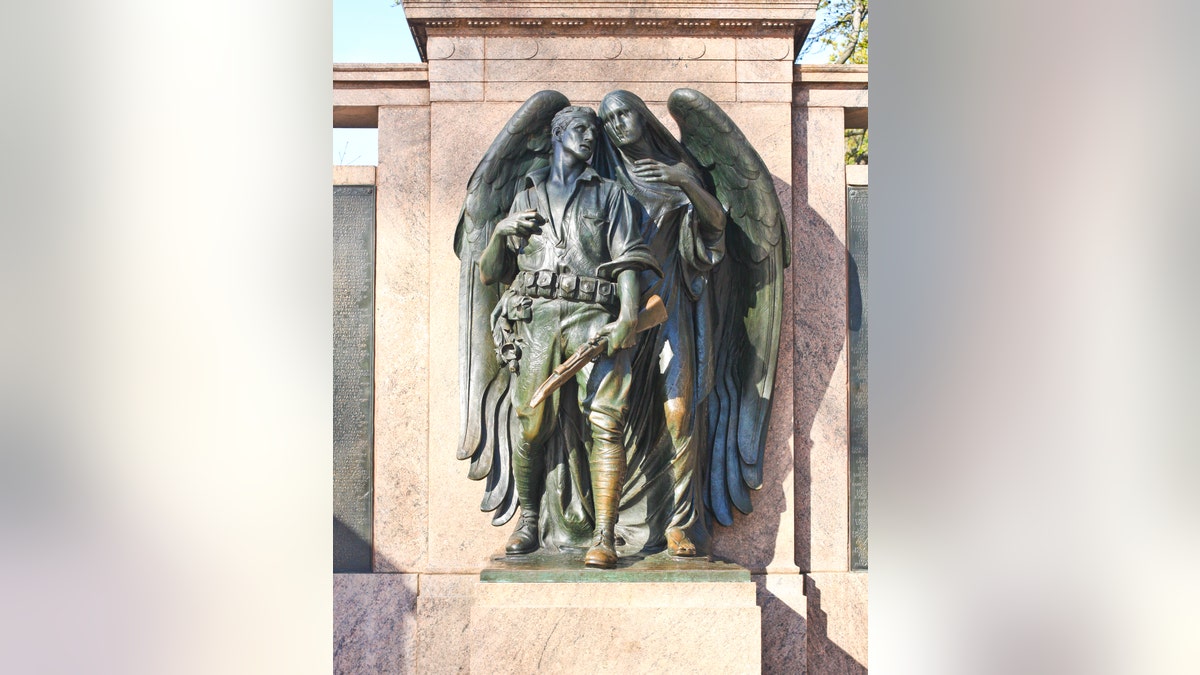
A parade of 3,000 Gold Star mothers led the unveiling of the haunting Angel of Death World War I memorial in Prospect Park, Brooklyn, in 1921. (Photo courtesy Kevin Fitzpatrick)
"What makes this sculpture unique from other ‘pensive’ doughboy motifs is the angel behind him, either speaking or wrapping her protective wings around him to whisk him off," Fitzpatrick wrote in his World War I guide.
An estimated 35,000 New Yorkers, led by a parade of 3,000 Gold Star mothers, attended the Angel of Death's unveiling in 1921, Fitzpatrick said.
Some war memorials are simply a quiet, dusty reminder of an unknown soldier’s last supper.
Legendary U.S. Marine and two-time Medal of Honor recipient Daniel Daly is buried in Cypress Hill National Cemetery in Brooklyn, beneath a somber gravestone that still receives visitors from around the world, the author added.
EVERY DAY IS MEMORIAL DAY AT DOVER AIR FORCE BASE
Daly entered American war hero lore when he famously uttered the phrase, "Come on, you sons of b------, do you want to live forever?" as he led Marines in a frantic charge against a German position at Belleau Wood n France in June 1918.
Not every World War I memorial, of course, is defined by the monumental grandeur of the Angel of Death or shaped by the heroic lore of Fr. Duffy or Sgt. Major Daly.
CLICK HERE TO GET THE FOX NEWS APP
Some war memorials are simply a quiet, dusty reminder of an unknown soldier’s last supper.




















